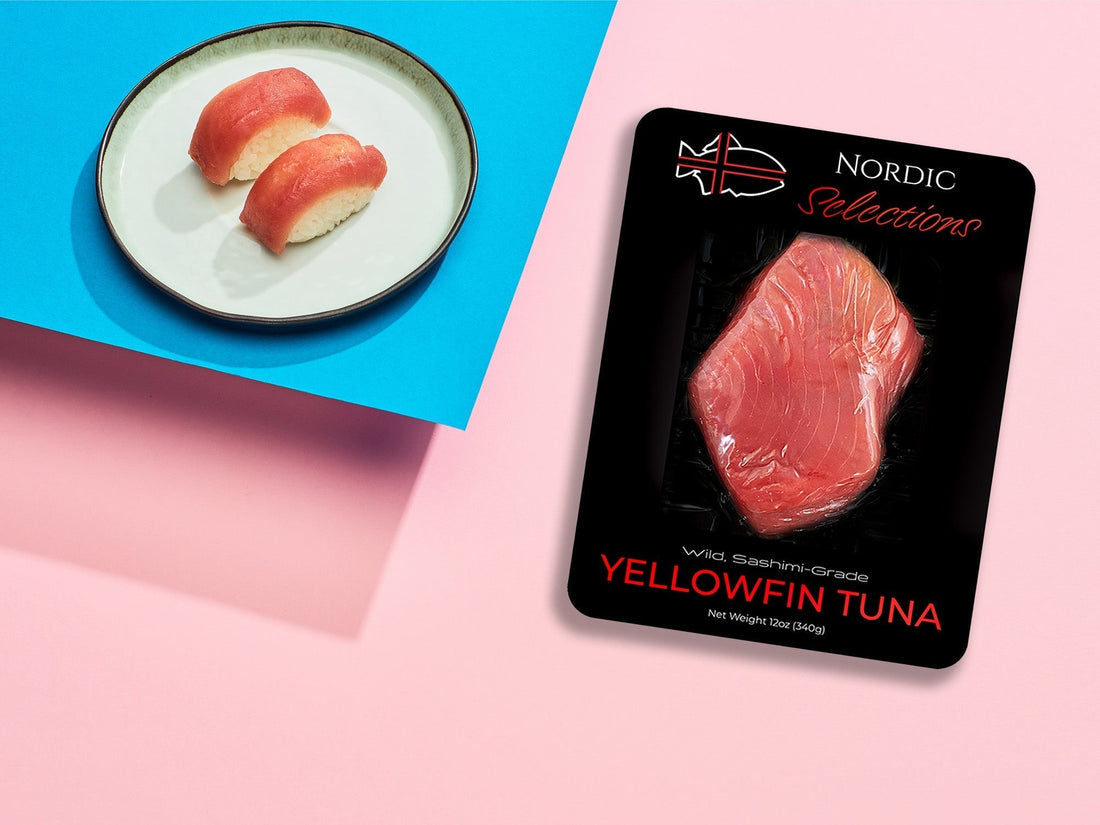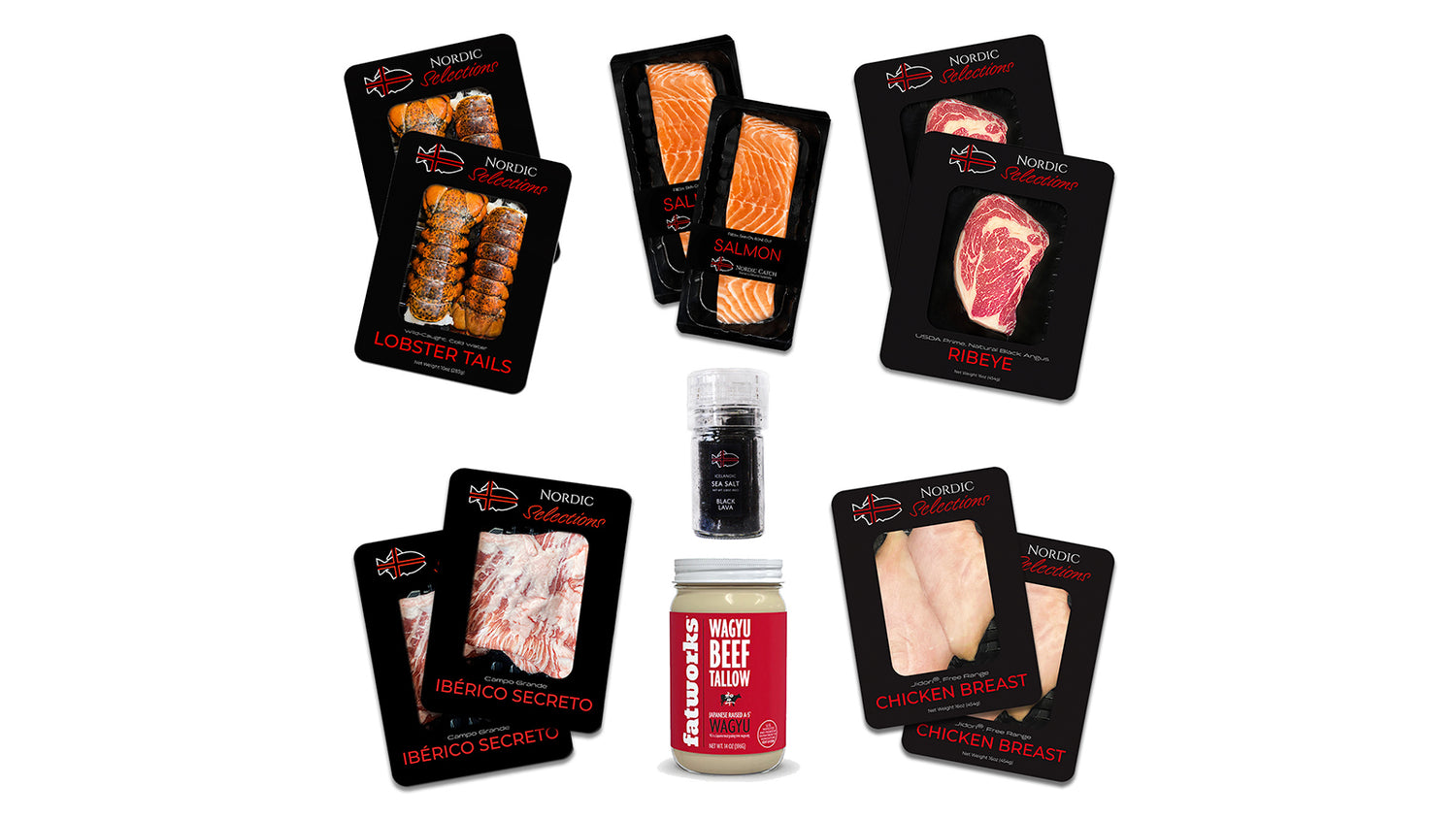
Why Carbon Monoxide Treated Fish Is Bad for You
When it comes to enjoying sushi-grade seafood, freshness is the focus. Nordic Catch understands this, which is why we source only the highest-quality sushi grade seafood for delivery to our customers, including top-tier ahi tuna.
However, not all tuna on the market is created equal. One concerning practice in the seafood industry is the treatment of carbon monoxide in fish, specifically tuna. But why is carbon monoxide-treated tuna bad? Let's dive into the details.
What Is Carbon Monoxide-Treated Tuna?
Carbon monoxide-treated tuna is a process that exposes the fish to carbon monoxide gas. This treatment preserves the bright red color of the tuna, making it appear fresher for a longer period of time.
While this may seem like a harmless practice, it can have profound implications for consumers. CO is used to prevent oxidation, keeping the meat artificially red and fresh-looking even as it begins to deteriorate. This practice, while effective in maintaining its appearance, can be misleading for consumers who rely on color as an indicator of freshness.
Why Is Carbon Monoxide-Treated Tuna Bad?
The industrial process of CO-treating tuna involves multiple touchpoints in the supply chain, increasing opportunities for mishandling and spoilage. From fishing boats to processing plants, and through multiple stages of transportation, each step adds complexity and risk. This complexity can further obscure the true quality and freshness of the fish, making it difficult for consumers to make informed decisions.
Carbon monoxide in fish might give people a false sense of security regarding the food’s safety. The treatment process does not kill any bacteria or parasites that may be present in the fish. This means that even though the tuna may look fresh, it could still pose a health risk if it’s raw or undercooked.
The FDA classifies CO treatment as Generally Recognized as Safe (GRAS) but mandates that retailers label treated fish. However, compliance with this labeling requirement is low, increasing the risk of consumer deception.
Is Carbon Monoxide Treated Fish Safe to Eat in General?
Carbon monoxide treated fish is FDA-approved as safe but it is banned in many countries such as Japan, Canada, China, Singapore, Taiwan, and all 27 countries in the European Union (EU) for various reasons. Generally, the US has looser food regulations compared to the rest of the world, and the FDA approval of carbon monoxide treated fish is evidence of that.
So is it safe? The FDA says so, but we wouldn't recommend eating it.
Carbon monoxide treatment preserves the fish's red color, potentially masking spoilage and placing consumers at risk for bacteria-borne illnesses. The CO itself doesn't pose health risks, but it can make fish appear fresher than it is, which is a direct health risk.
You should be aware that color isn't a reliable seafood freshness indicator for CO-treated fish. Proper storage and handling remain crucial for safety. Check out our guide on how to store fish in the fridge.
The Health Risks of Eating Carbon Monoxide Treated Tuna
Consuming carbon monoxide-treated tuna can pose potential health risks. If the fish is not handled and cooked correctly, it can lead to foodborne illnesses such as scombroid poisoning or parasitic infections. These illnesses can cause symptoms like nausea, vomiting, diarrhea, and, in severe cases, even neurological issues.
There have been health outbreaks linked to CO-treated seafood, including a major salmonella outbreak in 2015 and a Hepatitis A outbreak linked to imported scallops. These incidents highlight the potential dangers associated with consuming fish that may appear fresh but that is actually compromised.
Global Regulations
The global regulations surrounding tuna treated with carbon dioxide vary significantly. In Japan, Canada, the European Union, China, and several other prominent countries around the globe, CO treatment of fish is banned due to health concerns. These countries have recognized the potential risks and have taken steps to protect consumers.
In the U.S., CO treatment remains legal, and the FDA considers it Generally Recognized as Safe (GRAS). Despite this classification, the lack of strict labeling requirements and enforcement means that many consumers remain unaware that the tuna they are purchasing is CO-treated.
This disparity in regulations raises questions about the safety and ethics of allowing such practices to continue in certain markets.
Natural Tuna: Healthier & Higher Quality
Natural tuna, which has not been treated with CO, tends to naturally turn brown as it ages but is substantially healthier and higher-quality. Consumers who choose natural tuna are opting for a product that is free from artificial enhancements, supporting better health outcomes and the growing demand for more natural food products.
The difference in taste between natural and tuna treated with carbon monoxide is notable, with natural tuna offering a richer, more authentic flavor that sushi enthusiasts appreciate.
Sustainable Fishing Practices: Ensuring Quality & Safety
While suppliers have used carbon monoxide treatment to maintain the appearance of tuna, there are safer and more sustainable practices that prioritize both the quality of the fish and the health of our oceans. One such approach means implementing sustainable fishing practices, which focus on responsible harvesting methods and maintaining the fish populations at healthy levels.
What Are Sustainable Fishing Practices?
Sustainable fishing practices ensure fish populations are not overexploited and that marine ecosystems remain balanced. These practices include:
-
Selective fishing methods: Using gear and techniques that target specific species and sizes of fish, reducing bycatch (the capture of unintended species) and minimizing the ecological impact.
-
Seasonal fishing: Adhering to fishing seasons that align with the natural breeding cycles of fish, allowing populations to replenish.
-
Catch limits: Implementing quotas and catch limits to prevent overfishing and ensure the long-term sustainability of fish stocks.
- Marine protected areas: Establishing areas where fishing is restricted or prohibited to preserve critical habitats and biodiversity.
Consumer Awareness & Informed Choices
Consumers like you play a crucial role in driving change in the seafood industry. By asking about the source and handling methods of your tuna, you can make more informed choices that prioritize quality and safety. Awareness of CO treatment and its implications can lead to greater demand for natural tuna, encouraging suppliers to adopt safer and more transparent practices.
When enjoying tuna, choosing quality and freshness over appearance is imperative. Nordic Catch understands this, which is why we take pride in sourcing sushi-grade ahi tuna that is free from carbon monoxide treatment. Opting for tuna not treated with carbon monoxide ensures you get the freshest and safest fish possible.
So, the next time you're craving sushi, ask your sushi chef or supplier about their tuna sourcing practices. Knowing where and how the supplier caught and processed the tuna can help you make informed choices and enjoy your favorite sushi dishes with peace of mind.
Frequently Asked Questions (FAQs)
Why is the fish we eat from the supermarket treated with carbon monoxide?
Fish from supermarkets is sometimes treated with carbon monoxide to maintain its bright red color, making it appear fresher and more appealing to consumers. This treatment can extend the fish's marketable shelf life by preventing oxidation and browning. However, it is controversial because it may mask spoilage, potentially misleading consumers about the fish's freshness and safety.
Is carbon monoxide in fish bad?
Carbon monoxide treatment of fish is quite controversial. While not directly harmful to consume, it can mask spoilage and potentially mislead consumers about freshness, which can lead to food-borne illnesses.
Is carbon monoxide harmful in food?
CO treatment is considered generally safe by the FDA, but it's banned in many countries due to concerns about masking spoilage.
Why is carbon monoxide added to frozen fish?
Carbon monoxide is added to preserve the bright red color of fish like tuna, preventing oxidation and browning. This makes the fish appear fresher for longer periods.
What is fish preserved with carbon monoxide?
Fish treated with carbon monoxide is often referred to as "CO-treated," "gassed," or treated with "tasteless smoke." It's commonly used on tuna and sometimes on other species like tilapia.

